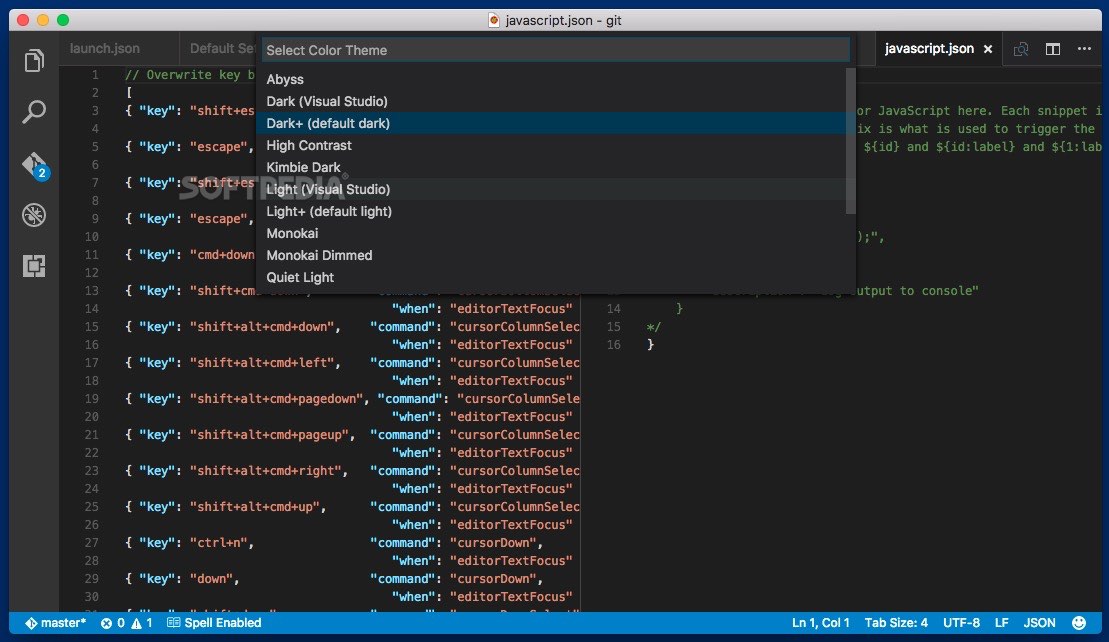Coder.com has open sourced its cloud-server component which allows VSCode to run on a remote server fully accessible through the browser.
- There is way to choose the browser you would like to use. Here is the code snippet which will add different debug configuration to VS Code. To use this, first you need to open launch.json file. You can find the launch.json file under.vscode folder.
- The method of modifying tasks.json no longer works in newer versions of Visual Studio Code. The easiest way to be able to launch your code in a browser is to install the Open in Browser extension from the marketplace. After it is installed and VS Code is reloaded, you can go to your code and press ALT + B to launch your application in your default browser or ALT + SHIFT + B to select the browser you want to.
- It is a source-code editor while Visual Studio is an IDE (integrated development environment). VS Code supports development operations such as debugging, task running, and version control, like Visual Studio. In this blog, we will learn about developing, debugging, testing, and deploying ASP.NET Core applications using Visual Studio Code.
What is the advantage of that?
Available at Coder.com, its the alpha release of a completely virtualized hosted version of Visual Studio Code. Remotely develop from any browser equipped machine by simply navigating to ide.coder.com.
- Code on your Chromebook, tablet, and laptop with a consistent dev environment.
- Take advantage of large cloud servers to speed up tests, compilations, downloads, and more.
- Preserve battery life when you're on the go as all intensive computation runs on your server, plus you're no longer running excess instances of Chrome.
Code-server is available as a single binary or Docker image and can be self hosted locally, which of course beats the purpose of portability, or on remote servers such as a VPSs' on Digital Ocean.
In addition to Digital Ocean's, there's also detailed instructions for Google Cloud and AWS.
Installation can be as easy as :
- Open a terminal on your computer and SSH into your instance
example:sshroot@203.0.113.0 - Once in the SSH session, visit code-server releases page and copy the link to the download for the latest linux release
Find the latest Linux release from this URL:
https://github.com/codercom/code-server/releases/latest - Replace {version} in the following command with the version found on the releases page and run it (or just copy the download URL from the releases page):
wget https://github.com/codercom/code-server/releases/download/{version}/code-server-{version}-linux-x64.tar.gz - Extract the downloaded tar.gz file with this command, for example:
tar -xvzf code-server-{version}-linux-x64.tar.gz - Navigate to extracted directory with this command:
cd code-server-{version}-linux-x64 - If you run into any permission errors when attempting to run the binary:
chmod +x code-server - Finally start the code-server
sudo ./code-server -p 80
Code-server is using a self-signed SSL certificate so that you can access it over HTTPS.For instructions on how to generate a self signed certificate and start code-server using your certificate/key, check Generate a self-signed certificate.
Now you can access VSCode when you visit your Droplets public IP on port 80, but of course you can bind it to another port if on 80 is already occupied.It might also worth protecting the end point with at least basic authentication or start code-server with the built-in option -P, --password <value> which requires a password for authentication.
Also an option to keep in mind is the --disable-telemetry flag or set DISABLE_TELEMETRY=true which disables the tracking Code.com does, collecting data for self improvement.It is not clear if that also disables the telemetry that Microsoft uses too.Recently we've seen the release of an other open source version of Visual Studio Code called VSCodium that doesn't pass telemetry data back to Microsoft aiming to offer a more private development experience to Visual Studio developers.

Code-server is available from Github, which repo is attracting a lot of popularity, 16,218 Stars and 863 forks at the time of writing.With that many forks, more customizable versions with extra features are bound to appear soon.Versions that for example enable code-server to integrate with the official VSCode Marketplace in order to use its
Extensions, something not currently supported out of the box.Code.com has however made a custom extension marketplace
focused around open-sourced extensions. That said if you have access to the .vsix file you can always manually install the extension.
More Information
Related Articles
To be informed about new articles on I Programmer, sign up for our weekly newsletter,subscribe to the RSS feed and follow us on Twitter,Facebook or Linkedin.
| Git Command Explorer 22/04/2021 There's no shortage of ideas when it comes to making one's life easier when tackling Git. That says a lot about both the power and the learning curve of the tool. Here's a new educational tool th [ ... ] |
| Oracle V Google Android Case Settled 05/04/2021 At long last the 10 year case between Oracle and Google over the copyright or otherwise of the APIs used in Android is settled, the SCOTUS verdict is in. |
| More News |
Comments
or email your comment to: comments@i-programmer.info
How To Run Visual Studio Code In Browser
A lightweight extension that allows you to browse and edit remote files over SFTP. Features
Usage
Extension Commands
Extension Settings
See the User Settings file for more info. Notes
Roadmap
ContributingFeel free to open an issue or drop a pull request! Release Notes0.7
0.6
0.5.6
0.5.5
0.5.3
0.5.2
0.5.1
0.5.0Initial release |
